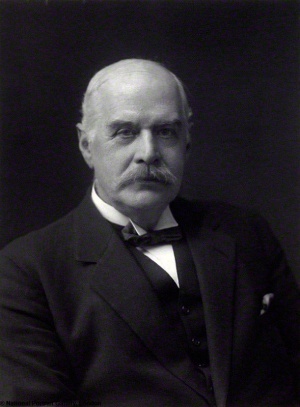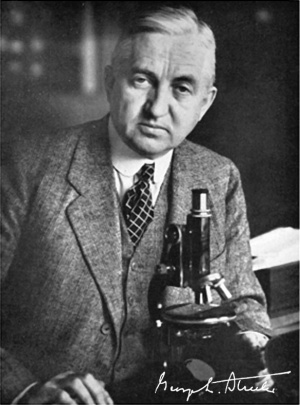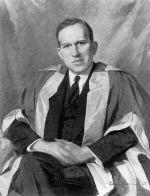Book - Human Embryology (1945)
| Embryology - 24 Apr 2024 |
|---|
| Google Translate - select your language from the list shown below (this will open a new external page) |
|
العربية | català | 中文 | 中國傳統的 | français | Deutsche | עִברִית | हिंदी | bahasa Indonesia | italiano | 日本語 | 한국어 | မြန်မာ | Pilipino | Polskie | português | ਪੰਜਾਬੀ ਦੇ | Română | русский | Español | Swahili | Svensk | ไทย | Türkçe | اردو | ייִדיש | Tiếng Việt These external translations are automated and may not be accurate. (More? About Translations) |
Hamilton WJ. Boyd JD. and Mossman HW. Human Embryology. (1945) Cambridge: Heffers.
| Historic Disclaimer - information about historic embryology pages |
|---|
| Pages where the terms "Historic" (textbooks, papers, people, recommendations) appear on this site, and sections within pages where this disclaimer appears, indicate that the content and scientific understanding are specific to the time of publication. This means that while some scientific descriptions are still accurate, the terminology and interpretation of the developmental mechanisms reflect the understanding at the time of original publication and those of the preceding periods, these terms, interpretations and recommendations may not reflect our current scientific understanding. (More? Embryology History | Historic Embryology Papers) |
| Online Editor |
|---|
| This 1945 historic textbook by Hamilton, Boyd and Mossman was used widely for many years and was reissued through many editions. Currently the only content are the chapter titles shown.
|
Human Embryology
Prenatal Development Form And Function
| Thomas Hastie Bryce | George Linius Streeter |
Preface
This book is a presentation of the subject of human embrjology in the light of the aclvanc which ha\e been made in it during the past twenty years An attempt has been made to ht the developmental history of the embryo into the background of the physiological changes in the maternal organism and to correlate the development of embryonic function with that of its form \Nc have aho tried to introduce the concepts of development which have been establislied b\ the work of experimental embryologists (Chapters I and VIII) These concepts are of c,reat theoretical, and we believe practical importance but, unfortunately, they do not readily lend themselv es to elementary exposition further as they are based almost exclusively on the results of experiments on animals below the mammals it is extremely difficult to present them without assuming a knowledge of comparative Embryology A brief survey of compara tive vertebrate development is therefore, given in the last chapter and if the reader finds difficulty with Chapter VIII it is recommended that he studies Chapter XVI before proceeding with the attempt at mastering the concepts of determination and the organizer Special attention is paid m Chapters V and XVI to placeniation and the embryonic membranes as a knowledge of these aspects of embrvology is of special importance m the study of the problems of embryonic and foetal nutrition and of the prenatal relationship between the mother and the child.
References to embrvological literature arc full not however with the intention that the student shall consult all or even more than a very few of them We feel lint direct reference to the original literature is a habit that the student should acquire early and tint an extensive bibliography gives an opportunity to track down original observations on any aspect of a bio logical problem which may particularly interest the reader For this reason titles of papers have been deliberately given in full even at the expense of lengthening the text It is felt that the bibliographies may also be of service to more senior students.
A sound knowledge of embryology cannot be obtained solely from a textbook We recommend students, therefore to obtain access to serial sections through mammalian or if possible human embryos and to study them carefully Many difficulties in organogenesis can quickly be resolved by reference to such scries and the drawing of a number of representauve sectiors provides n most excellent discipline for acquiring a knowledge of the basic structure of the mammalian body.
London W J H
October 1944 J D B
"And surely ue are all out of the computation of our age and eter^ man is some months elder than he bethinks him for tie hie moie haie a being, and are subject to the actions of the elements and the malice of diseases, in that other World the truest Microcosm the Womb of our Mother"
Sir Thomas Brownes Rehgio Medici 1642
From The Preface To The First Edition
This book IS a presentation of the subject of human embryology in the light of the advances which have been made in it during the past twenty years. An attempt has been made to ht the developmental history of the embryo into the background of the physiological changes in the maternal organism and to correlate the development of embryonic function with that of its form. We have also tried to introduce the concepts of development which have been establislied by the work of experimental embryologists (Chapters I and VIII) These concepts are of great theoretical, and we believe practical importance but, unfortunately, they do not readily lend themselv es to elementary exposition further as they are based almost exclusively on the results of experiments on animals below the mammals it is extremely difficult to present them without assuming a knowledge of comparative Embryology A brief survey of compara tive vertebrate development is therefore, given in the last chapter and if the reader finds difficulty with Chapter VIII it is recommended that he studies Chapter XVI before proceeding with the attempt at mastering the concepts of determination and the organizer Special attention is paid m Chapters V and XVI to placeniation and the embryonic membranes as a knowledge of these aspects of embrvology is of special importance m the study of the problems of embryonic and foetal nutrition and of the prenatal relationship between the mother and the child.
References to embrvological literature arc full not however with the intention that the student shall consult all or even more than a very few of them We feel lint direct reference to the original literature is a habit that the student should acquire early and tint an extensive bibliography gives an opportunity to track down original observations on any aspect of a bio logical problem which may particularly interest the reader For this reason titles of papers have been deliberately given in full even at the expense of lengthening the text It is felt that the bibliographies may also be of service to more senior students
A sound knowledge of embryology cannot be obtained solely from a textbook We recommend students, therefore to obtain access to serial sections through mammalian or if possible human embryos and to study them carefully Many difficulties in organogenesis can quickly be resolved by reference to such scries and the drawing of a number of representauve sectiors provides n most excellent discipline for acquiring a knowledge of the basic structure of the mammalian body.
London W J H
October 1944 J D B
Preface To Second Edition
For this edition the whole text has been extensively revised md many of the chapters have been completely recast and rewritten It has been considered advisable to give a brief introductory statement to each chapter so as to orientate the reader in attempt Ins been made to keep the text as short as possible and up to a point we feel that we have succeeded Excluding the index the subject matter has been increased from 343 to 411 pages This increase is mamly due to the increase in the number of illustrations from 364 to 433. A large number of photo micrographs have been added and many of the illustrations of the previous edition have been either redrawn or replaced conversion from squared off blocks to either cutout or deep etched blocks has been widely carried out we have also taken the opportunity to introduce a difTeicnt type face and to shorten the length of the line These typographical altcntions are also partly responsible for the increase in the size of the book.
WJH JDB HWM
Acknowledgments
We wish to acknowledge our indebtedness to the Carnegie Institution of Washington for the valuable help we have received fiom the numerous publications on embryology by members of the Staff and others associated with them. We would thank especially Dr G W Corner, Director of the Embiyological Laboratory, for original photographs of human embryos at different stages of development. To Dr A. T, Hcrtig and Dr J. Rock we are indebted for photographs of early human embryos. We are especially indebted to them for photographs of the two cell stage and the unattached human blastocyst.
We wish to thank the following foi permission to reproduce illustrations • — (a) The Wistar Institute of Anatomy and Biology for illustrations from the American Journal of Anatomy, (b) The American Journal of Obstetncs and Gynecology for Fig. 23 (c) Surgery, Gynecology and Obstetrics for Fig 18A. [d) Journal of Anatomy. All illustrations from the above sources have been acknow ledged m the accompanying legends.
We thank the Blakiston Company foi permission to reproduce Fig 424 from Snell’s Biology of the Laboratory Mouse, also Messrs Arnold, London, and Professor S J Cameron, of Glasgow, for permission to reproduce Fig. 91.
In the present edition we have to thank Professor A. Pomfret Kilner for permission to leproduce Fig, 176. We also wish to thank Mr P. J Blaxland, F.R.C S , for permission to reproduce Fig. 260 and the late Dr A. Peacock for Fig 370.
All the new illustrations are from the skilled draughtsmanship of Mr Frank Price and we have to thank him for his skill and patience We are indebted to many readers, and especiallv to Dr W Hammond of Syracuse University, for their constructive criticism and for pointing out a number of ambiguous statements.
We record our indebtedness to Di R. J Haiiison and to Dr T. M Roberts for their help in leading the manuscript and proofs and for their constructive criticism We wish to express our thanks to Mr E, J Park, technician in the Anatomy Department, Charing Cross Hospital Medical School, for the care he has taken in “pasting up” the annotations of the new illustrations He has also given us much help in the checking of the references.
We have been fortunate in the cordial lelationship which has existed between us and Messrs W. Heffer & Sons Ltd , the Printers and Publishers Mr R G Heffer has ahvays been willing to meet and satisfy our many demands for more illustrations Finally, we wish to thank Mr G Newman, works director of Messrs W Heffer & Sons Ltd , for his patience, resourcefulness and enthusiasm.
Contents
- Introductory Concepts
- Formation Maturation and Structure of the Germ Cells
- Cyclic Changes in the Female Genital Tract
- Fertilization Cleavage and Formation of the Germ Layers
- The Implantation of the Blastocyst and the Development of the Foetal Membranes Placenta and Decidua
- The Fate of the Germ Lavers and the Formation of the Essential (Primary) Tissues including the Blood
- Growth of the Embryo Development of External Form Estimation of Embryonic and Foetal Age
- Determination Differentiation the Organizer Mechanism Abnormal Development and Twinning
- Cardio Vascular System
- Alimentary and Respiratorv Systems Pleural and Peritoneal Cavities
- Urogenital System
- Nervous System
- Skeletal System
- Muscle and Fascia
- Integumentary System
- Comparative Vertebrate Development
Appendix
Index
| Historic Disclaimer - information about historic embryology pages |
|---|
| Pages where the terms "Historic" (textbooks, papers, people, recommendations) appear on this site, and sections within pages where this disclaimer appears, indicate that the content and scientific understanding are specific to the time of publication. This means that while some scientific descriptions are still accurate, the terminology and interpretation of the developmental mechanisms reflect the understanding at the time of original publication and those of the preceding periods, these terms, interpretations and recommendations may not reflect our current scientific understanding. (More? Embryology History | Historic Embryology Papers) |
Hamilton WJ. Boyd JD. and Mossman HW. Human Embryology. (1945) Cambridge: Heffers.
Cite this page: Hill, M.A. (2024, April 24) Embryology Book - Human Embryology (1945). Retrieved from https://embryology.med.unsw.edu.au/embryology/index.php/Book_-_Human_Embryology_(1945)
- © Dr Mark Hill 2024, UNSW Embryology ISBN: 978 0 7334 2609 4 - UNSW CRICOS Provider Code No. 00098G





